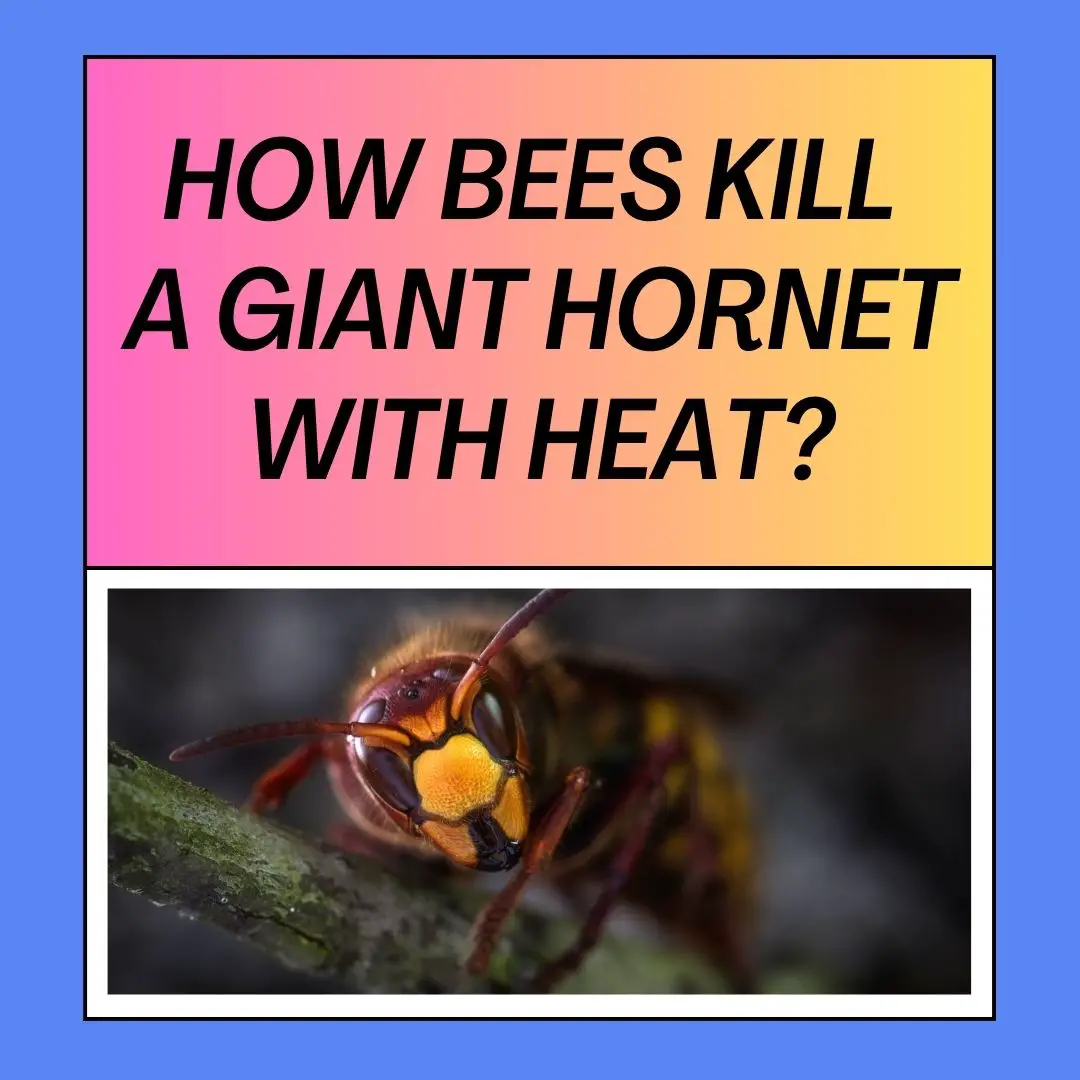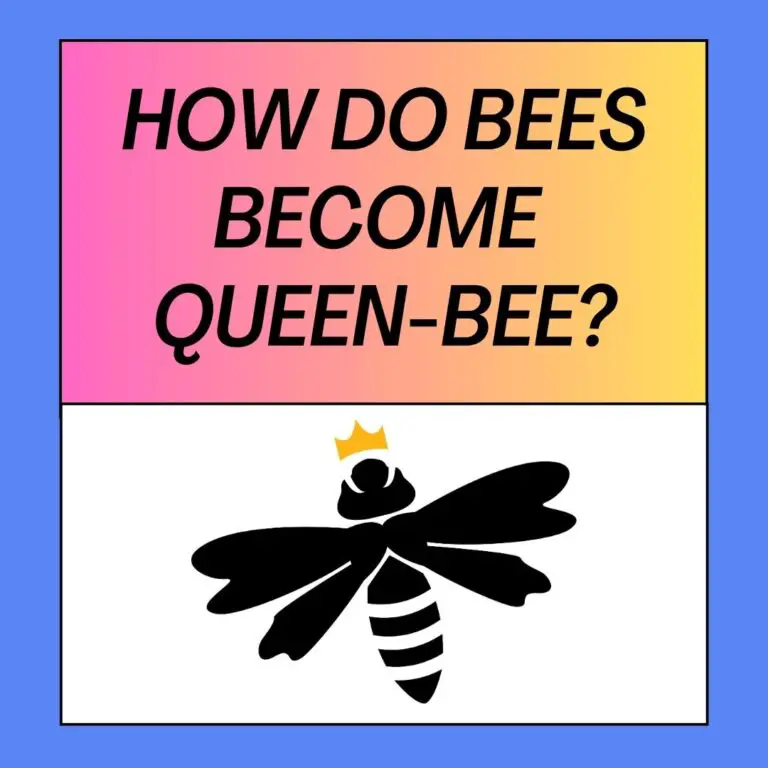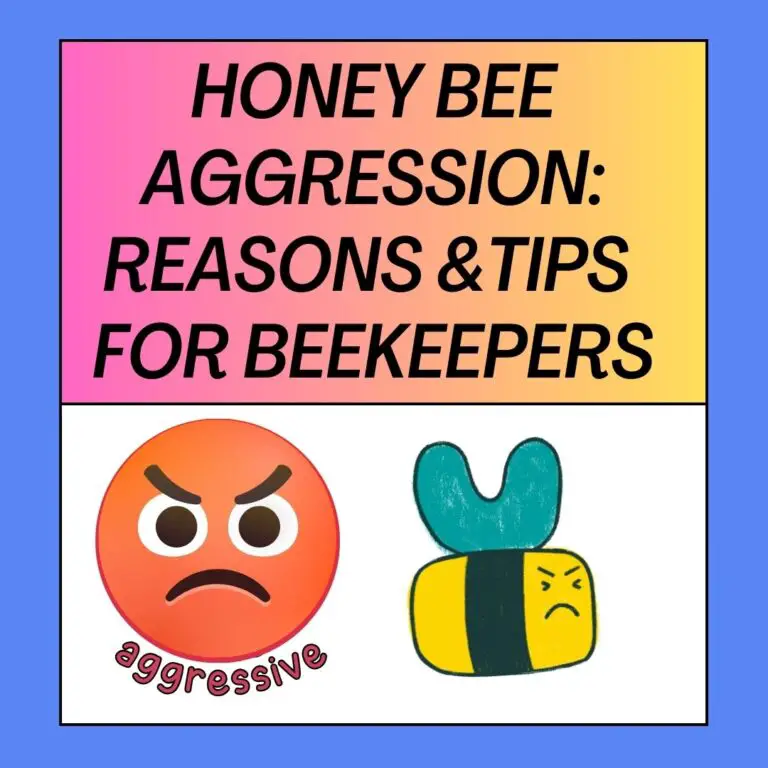
In the intricate world of nature, where survival often hinges on the balance of power, a remarkable phenomenon exists: the collective defense mechanism employed by honeybees against one of their most formidable adversaries – the giant hornet. These bees, through their sheer numbers and an ingenious display of thermal warfare, manage to fend off these menacing giants, providing a testament to the astonishing power of teamwork in the animal kingdom.
This article delves deep into the intriguing strategy honeybees employ to combat giant hornets, exploring the biological mechanisms, behavioral patterns, and the evolutionary significance of this phenomenon.
The Face-off: Honeybees vs. Giant Hornets
In the intricate tapestry of the natural world, different species often interact in fascinating ways, and some of the most compelling encounters occur between predators and their prey. The face-off between honeybees (Apis mellifera) and giant hornets (Vespa spp.) is a classic example of this ecological drama.
1. The Adversary: Giant Hornets
Giant hornets, particularly the Asian giant hornet (Vespa mandarinia), are formidable predators. These insects are native to Eastern Asia and are renowned for their size, measuring up to 5 centimeters (2 inches) in length. Their imposing presence and potent sting make them a fearsome opponent for many creatures in their ecosystem, including honeybees.
The giant hornet’s predatory prowess isn’t limited to their size; they are equipped with long, powerful mandibles, and their venomous sting contains a potent cocktail of enzymes that can dissolve flesh. Their primary prey includes insects, especially honeybee larvae and pupae, which they capture and bring back to their nests to feed their own larvae. When a giant hornet locates a honeybee hive, it can decimate an entire colony in a short span of time.
2. The Defenders: Honeybees
Honeybees are highly social insects that live in colonies comprised of thousands of individuals. They are remarkable for their intricate hive structures, complex communication systems, and the production of honey. Yet, their most remarkable feature, particularly in the context of defense against giant hornets, is their coordinated collective behavior.
When a giant hornet approaches a honeybee hive, the resident worker bees spring into action to defend their home. Their response is orchestrated, involving several stages, each with specific roles and functions.
The Phases of Defense
1. The Sentry Phase
The initial response of honeybees to the presence of a giant hornet is the release of alarm pheromones. Worker bees located near the hive’s entrance detect the intruder and emit these chemical signals to alert other bees. The alarm pheromone serves as a call to arms, mobilizing the colony for defense.
2. The Mobilization Phase
As the alarm pheromone spreads through the hive, it triggers a rapid mobilization of worker bees. These bees form a defensive cluster around the intruder, effectively encasing it in a ball of bees. This phase is crucial in containing the hornet and preventing it from entering the hive.
3. The Heat Phase: Thermal Warfare
The most remarkable and critical phase of defense against giant hornets is what can only be described as “thermal warfare.” Honeybees have evolved an astonishing adaptation to deal with their formidable foes – they generate heat.
Here’s how it works:
- Vibrational Heat Production: Worker bees in the encasing ball begin to vibrate their wing muscles vigorously. This rapid muscular activity generates heat, raising the temperature within the ball.
- Heat as a Weapon: The ball of bees becomes a veritable furnace, with temperatures rising to a critical level that giant hornets cannot withstand. Giant hornets are ectothermic, meaning they rely on external sources to regulate their body temperature. When exposed to excessive heat, their metabolic processes are disrupted, and their vital systems begin to fail.
- Heat-Tolerance of Honeybees: Honeybees, on the other hand, exhibit a remarkable heat tolerance. They have developed the ability to withstand higher temperatures than their adversaries, making them the architects of this ingenious defense strategy.
- Death by Heat: As the ball of bees continues to vibrate and generate heat, the giant hornet trapped inside begins to experience thermal stress. Its body temperature rises to a lethal level, causing irreversible damage to its internal organs and vital systems. Ultimately, the giant hornet succumbs to the heat and dies.
This defense strategy is not just a matter of chance; it’s a carefully orchestrated process that highlights the incredible adaptability and intelligence of honeybees. It’s a testament to millions of years of evolution that have fine-tuned this survival mechanism.
The Evolutionary Significance
The ability of honeybees to deploy such a complex and coordinated defense strategy against giant hornets has significant evolutionary implications. It showcases the power of collective behavior and the advantages it confers upon a social species.
1. Colony-Level Defense
The defense against giant hornets is a prime example of how social insects can collectively protect their colony from predators. While individual honeybees are vulnerable to predation, a colony acts as a superorganism, capable of deploying a potent defense that even large predators struggle to overcome.
2. Evolution of Thermal Tolerance
The honeybee’s remarkable ability to generate heat as a weapon is a result of evolutionary adaptation. Over time, natural selection favored bees with a higher heat tolerance, as this trait increased the chances of survival when defending against hornet attacks.
Eusocial insects, like honeybees, that live in large, organized colonies often exhibit advanced cooperative behaviors. These behaviors, honed by millions of years of evolution, provide them with a significant advantage in the natural world. The defense against giant hornets is just one example of the complex strategies that eusocial insects employ for their survival.
How Much Heat Can a Hornet Take?
Like other insects, Hornets have specific temperature limits beyond which their survival is compromised. The exact temperature tolerance varies among hornet species. Generally, most hornets can survive within a range of temperatures typical for their habitat. However, their survival is at risk when exposed to extremely high temperatures, such as those generated during a honeybee defensive ball (above 115°F or 46°C). Prolonged exposure to such high temperatures can lead to heat stress, metabolic disruption, and ultimately death for the hornet.
How Much Heat Can a Bee Take?
Honeybees have developed remarkable heat tolerance mechanisms, particularly when they engage in defensive heating to kill invading hornets. They can withstand temperatures well above their normal operating range. During a honeybee defensive ball, the temperature can reach levels as high as 117°F (47°C) or more. Individual honeybees can tolerate such high temperatures for short durations because their critical thermal maximum (the highest temperature they can withstand before suffering lethal damage) is lower. However, the collective action of the bees in a defensive ball creates a lethal environment for hornets.
How Do Bees Respond to Heat?
Bees respond to heat in various ways depending on the circumstances:
- Thermoregulation: Bees actively regulate the temperature within their hive to maintain optimal conditions for brood development and honey storage. They do this by fanning their wings to cool the hive or clustering together to generate heat in colder weather.
- Defensive Heating: When threatened by predators like hornets, honeybees can form a heated defensive ball around the intruder. This behavior involves clustering tightly around the threat, increasing their metabolic heat production to create lethal temperatures for the intruder.
Are Bees Attracted to Heat?
Bees are not inherently attracted to heat as a food source, as they primarily forage for nectar and pollen. However, they are sensitive to temperature changes and use environmental cues, including temperature variations, to regulate their behavior. For example, warmer temperatures can stimulate bees to forage more actively.
Does Heat Hurt Bees?
While bees have mechanisms to tolerate and manage heat within their hive, extreme heat can indeed harm them. High temperatures can stress bees and negatively impact their physiological functions. Additionally, excessive heat can lead to dehydration if bees cannot find adequate water sources to cool themselves and the hive. In summary, while bees can handle a range of temperatures, including generating heat for defensive purposes, extreme heat can be detrimental to their well-being and colony health.
How Do Bees Create Heat? What Happens When Bees Overheat?
Bees generate heat through metabolic processes, primarily by contracting their flight muscles without moving their wings. This action, known as endothermic thermogenesis, produces heat that warms the bee or the hive when clustered together. During defensive heating, bees intensify this muscle activity to raise the temperature within the cluster.
When bees overheat, it can have detrimental effects on their health and colony function. Prolonged exposure to high temperatures can cause heat stress, which may lead to impaired foraging, reduced brood development, and even bee mortality. Additionally, excessive heat within the hive can melt wax combs, potentially causing damage to the colony’s structure.
Bees and the Giant Hornet Queen Battle: Nature’s Epic Showdown
Nature is a theater of relentless struggles, where survival is often a high-stakes game. Among the many captivating battles that play out in the wild, one of the most fascinating is the epic showdown between bees and the giant hornet queen. This battle, marked by strategy, numbers, and raw determination, offers a glimpse into the intricate dynamics of predator-prey relationships in the natural world.
In this article, we delve into the dramatic contest between bees and giant hornet queens, exploring the players, the tactics, and the high stakes involved in this enthralling encounter.
The Players: Bees and Giant Hornets
The Bees
Honeybees, specifically the European honeybee (Apis mellifera), are one of the most well-known bee species in the world. They are highly social insects that live in colonies, with each colony consisting of thousands of individual bees. These colonies are known for their complex hierarchy, division of labor, and ability to produce honey.
The Giant Hornets
Giant hornets belong to the genus Vespa and are known for their imposing size, with some species reaching up to 5 centimeters (2 inches) in length. While there are various species of giant hornets found across Asia, the Asian giant hornet (Vespa mandarinia) is perhaps the most renowned. These hornets are apex predators in their ecosystems and are infamous for their potent venom and aggressive hunting behavior.
The Battle of Survival: Giant Hornets vs. Bees
1. The Predatory Nature of Giant Hornets
Giant hornets are formidable predators. Their primary prey includes various insects, particularly honeybees and their larvae. What sets giant hornets apart as predators is their strategy for obtaining food. They don’t simply consume their prey; instead, they capture honeybee workers and feed them to their own larvae. This predatory behavior poses a significant threat to honeybee colonies.
2. The Quest for Honeybee Colonies
Giant hornet queens are always on the lookout for honeybee colonies to raid. They have an acute sense of smell that allows them to detect the scent of honeybee colonies from a considerable distance. Once they locate a colony, they embark on a raid to capture honeybee workers and larvae.
3. The Defense Mechanisms of Honeybee Colonies
Honeybee colonies have evolved various strategies to defend against giant hornet attacks. These defenses involve a combination of physical barriers, alarm signals, and collective behaviors.
a. Physical Barriers: The entrance to a honeybee hive is designed with a small opening that can be defended by a few guard bees. This small entrance size hinders the entry of larger predators like giant hornets.
b. Alarm Signals: When a honeybee colony detects the presence of a giant hornet, alarm pheromones are released. These chemical signals alert other bees to the threat and trigger a collective response.
c. Collective Defense: One of the most remarkable aspects of honeybee defense is their ability to form a heated defensive ball around a hornet that infiltrates the hive. The ball is composed of worker bees, and their collective body heat raises the temperature around the hornet to a level it cannot tolerate, effectively killing the intruder.
The High-Stakes Battle: Giant Hornet Queens vs. Honeybee Colonies
1. The Giant Hornet Queen’s Strategy
Giant hornet queens are the architects of their colonies. In spring, a mated queen searches for a suitable location to start a new colony. Once she finds a suitable site, she begins laying eggs, which hatch into worker hornets. These workers assume the responsibilities of foraging for food, including capturing honeybees.
2. The Honeybee Colony’s Defense
When a giant hornet queen and her workers attempt to raid a honeybee colony, they face staunch resistance. Guard bees stationed at the hive entrance are the first line of defense, attempting to repel the intruders. If a giant hornet successfully breaches the entrance, alarm pheromones are released, alerting the entire colony.
3. The Heated Confrontation
The most dramatic phase of this battle occurs when a giant hornet queen manages to infiltrate the hive. Worker bees immediately swarm around her, forming a heated ball of bees. The collective body heat generated by the bees within the ball raises the temperature to a critical level, causing thermal stress to the hornet.
As a result of this intense heat, the hornet’s metabolic processes are disrupted, and its vital systems begin to fail. In essence, the honeybees use their own bodies to create a weaponized, lethal environment for the hornet.
The Evolutionary Implications
The battle between giant hornets and honeybee colonies holds intriguing evolutionary implications. It illustrates the power of collective defense mechanisms in social insects and highlights the incredible adaptability of honeybees.
1. Collective Defense as an Evolutionary Advantage
The ability of honeybee colonies to collectively defend against giant hornet raids is a testament to the advantages of social living. While individual honeybees are vulnerable, a colony acts as a superorganism, deploying a potent defense that even formidable predators struggle to overcome.
2. Evolution of Defensive Strategies
Over millions of years of coexistence, both honeybees and giant hornets have likely evolved their respective strategies. Honeybees have developed physical barriers, alarm systems, and the capacity for thermal warfare, while giant hornets have honed their hunting techniques and developed strategies for infiltrating hives.
Conclusion
The defense mechanism employed by honeybees against giant hornets is a testament to the astonishing power of collective behavior and adaptation in the animal kingdom. Through the release of alarm pheromones, the formation of defensive clusters, and the ingenious use of thermal warfare, honeybees have evolved a sophisticated defense strategy to protect their colonies.
This remarkable adaptation not only showcases the resilience and intelligence of honeybees but also highlights the evolutionary advantages conferred by social living. As a result, honeybees continue to thrive in the face of their formidable adversaries, reaffirming their status as one of nature’s most remarkable species.






